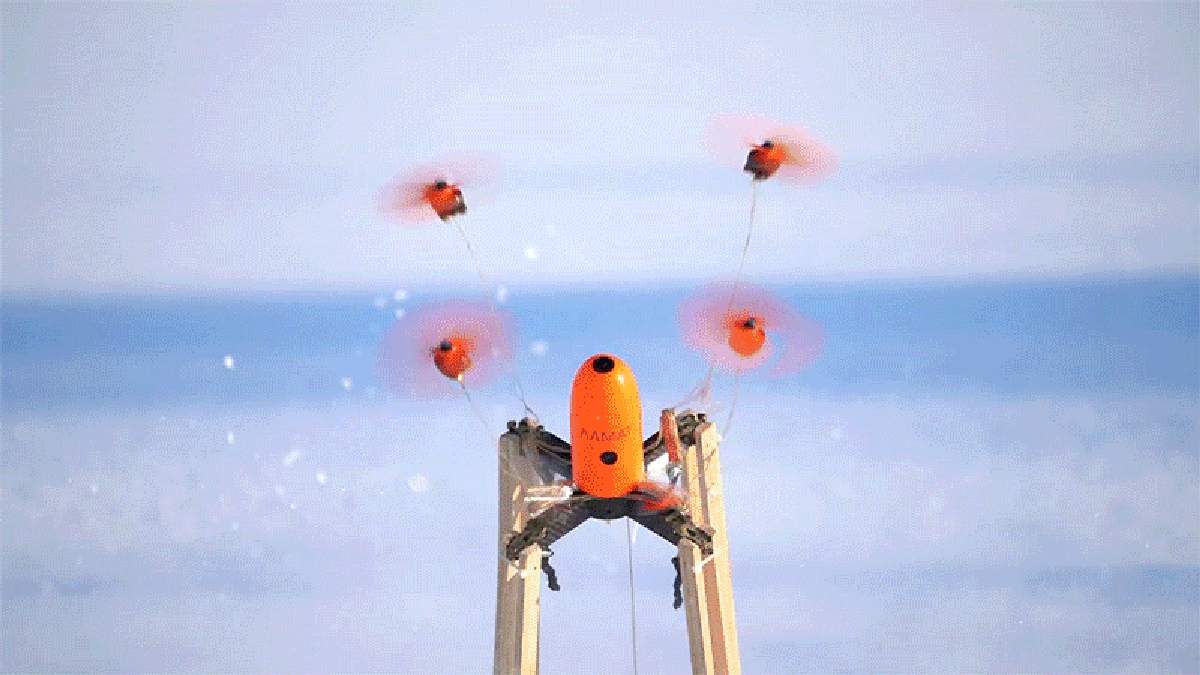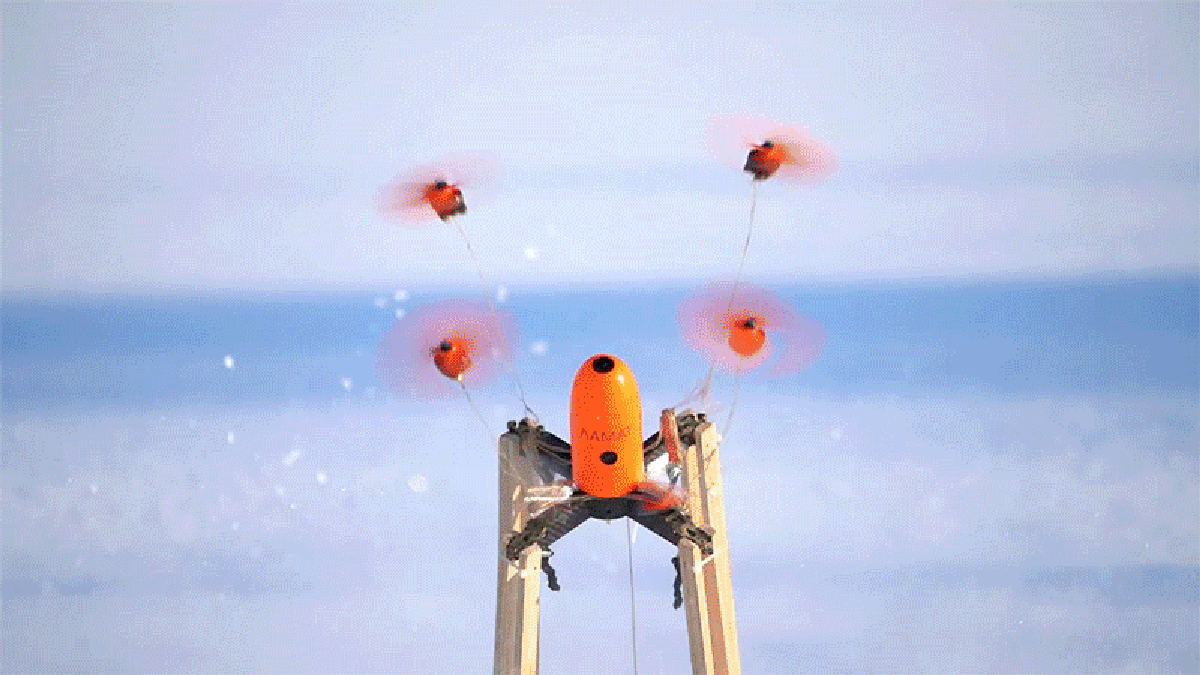
Created using the same chassis, motors, and propellers that are used to build fast and highly maneuverable racing drones, Zaitsevsky’s Interceptor Drone benefits from a high power-to-weight ratio, allowing it to quickly intercept another flying target. Depending on its payload, said target will probably be moving at considerably slower speeds.
Cameras onboard the Interceptor Drone provide a real-time view of the target to a pilot on the ground, allowing them to assess whether or not the drone in question poses a genuine threat. If it does, the Interceptor Drone is then piloted and positioned beneath its target, at which point its four motors and propellers rapidly accelerate and detach from the drone, flying upwards while dragging a deployed kevlar net that spreads out and disables the other craft by tangling its own rotors.
The use of the high-powered drone racing motors allows the Interceptor Drone to launch a larger net than other airborne launch systems can accommodate, and as the motors detach from the craft, a parachute is deployed which delivers it safely to the ground and leaves it ready to be quickly reset. Although it’s not an autonomous solution to drone interception—a skilled drone racing pilot is needed for the Interceptor Drone to accurately do its job—as anti-drone technologies go, this drone is incredibly compact and lightweight and can be transported in a small box, allowing a vehicle to carry multiple units and deal with multiple targets.
Advertisement
